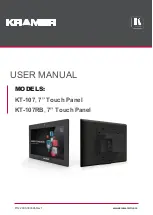
- 8
-
Figure1: PV module title angle
For standalone systems with batteries where the PV modules are attached to a
permanent structure, the tilt angle of the PV modules should be selected to optimize
the performance based on seasonal load and sunlight. In general, if the PV output is
adequate when irradiance is low (e.g., winter), then the angle chosen should be
adequate during the rest of the year. For grid-connected installations where the PV
modules are attached to a permanent structure, PV modules should be tilted so that
the energy production from the PV modules will be maximized on an annual basis.
Only for UL listed products -
The System Fire Class Rating of the module or panel in a mounting system in
combination with a roof covering complete with requirements to achieve the specified
System Fire Class Rating for a non-BIPV module or panel.
Any module or panel mounting system limitations on inclination required to maintain a
specific System Fire Class Rating.
2.3 Mechanical Installation introduction
Solar PV modules usually can be mounted by using the following methods: screws
and clamps.
﹡
Note:
1) All installation methods herein are only for reference, and Jinko solar will not
provide related mounting components, the system installer or trained professional
personnel must be responsible for the PV system‟s design, installation, and
mechanical load calculation and security of the system.
2) Before installing, you should confirm below important things:
Summary of Contents for JKMxxxM-60 Series
Page 1: ...JinkoSolar Photovoltaic Module User Manual UL1703 ...
Page 22: ... 20 Note ...










































